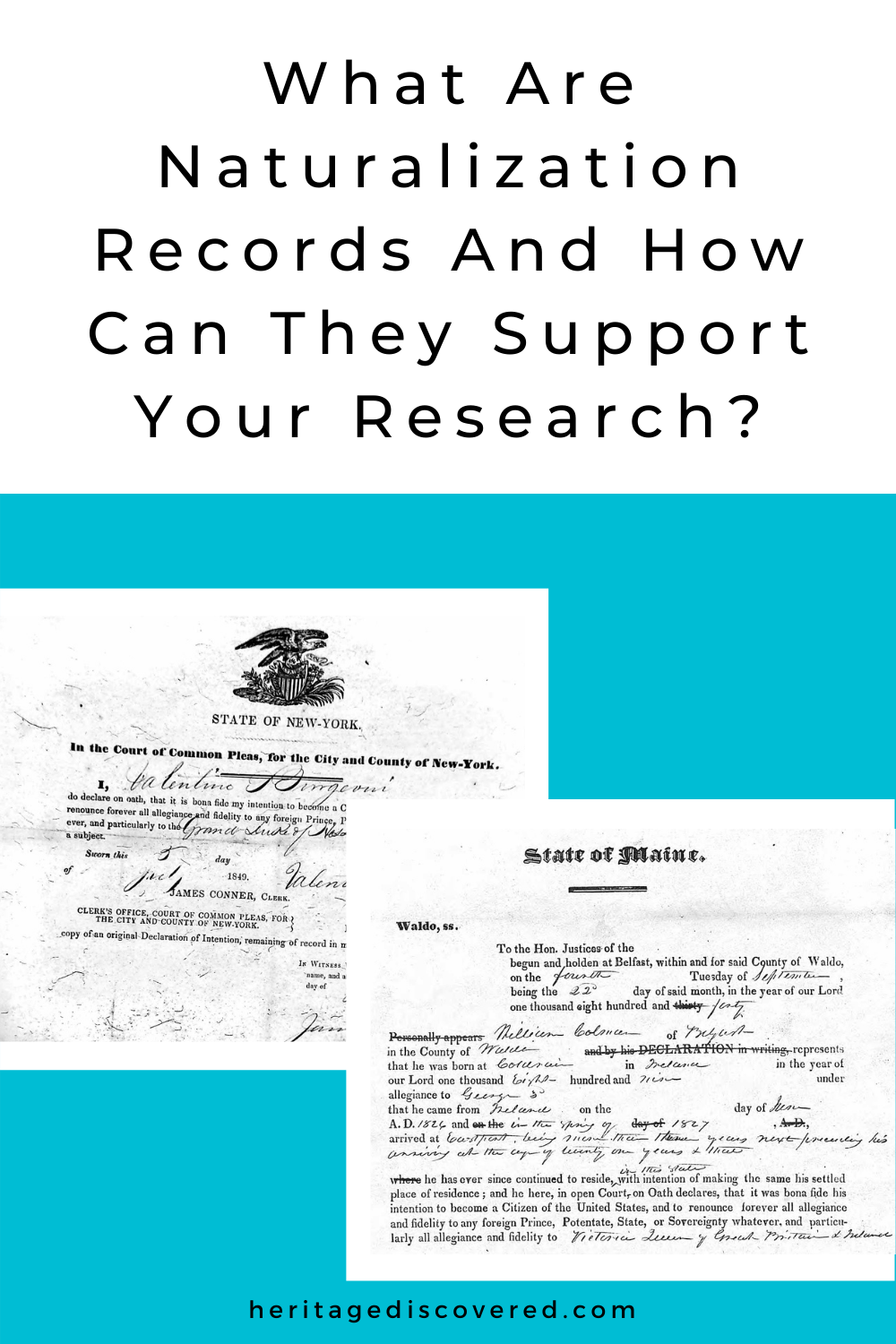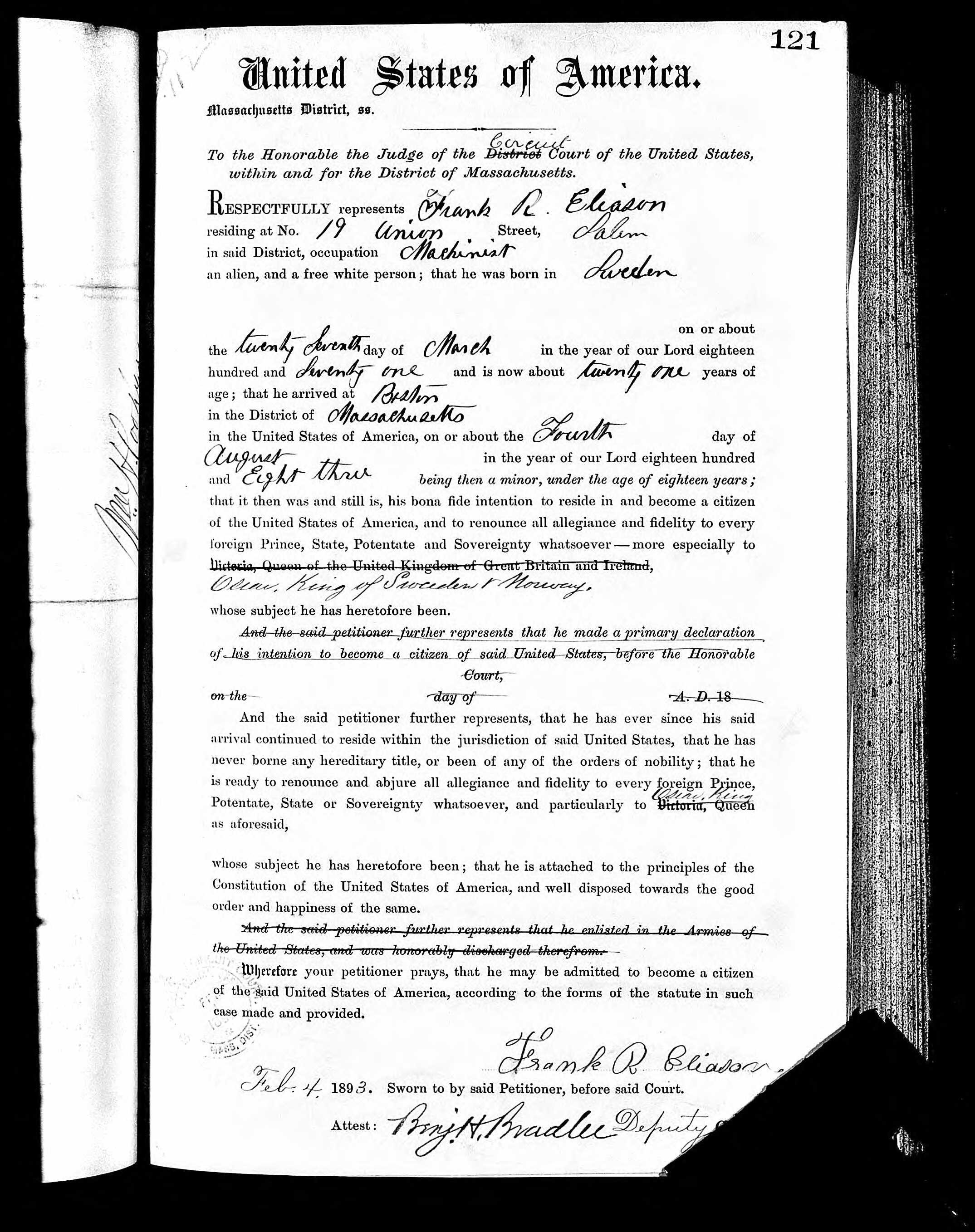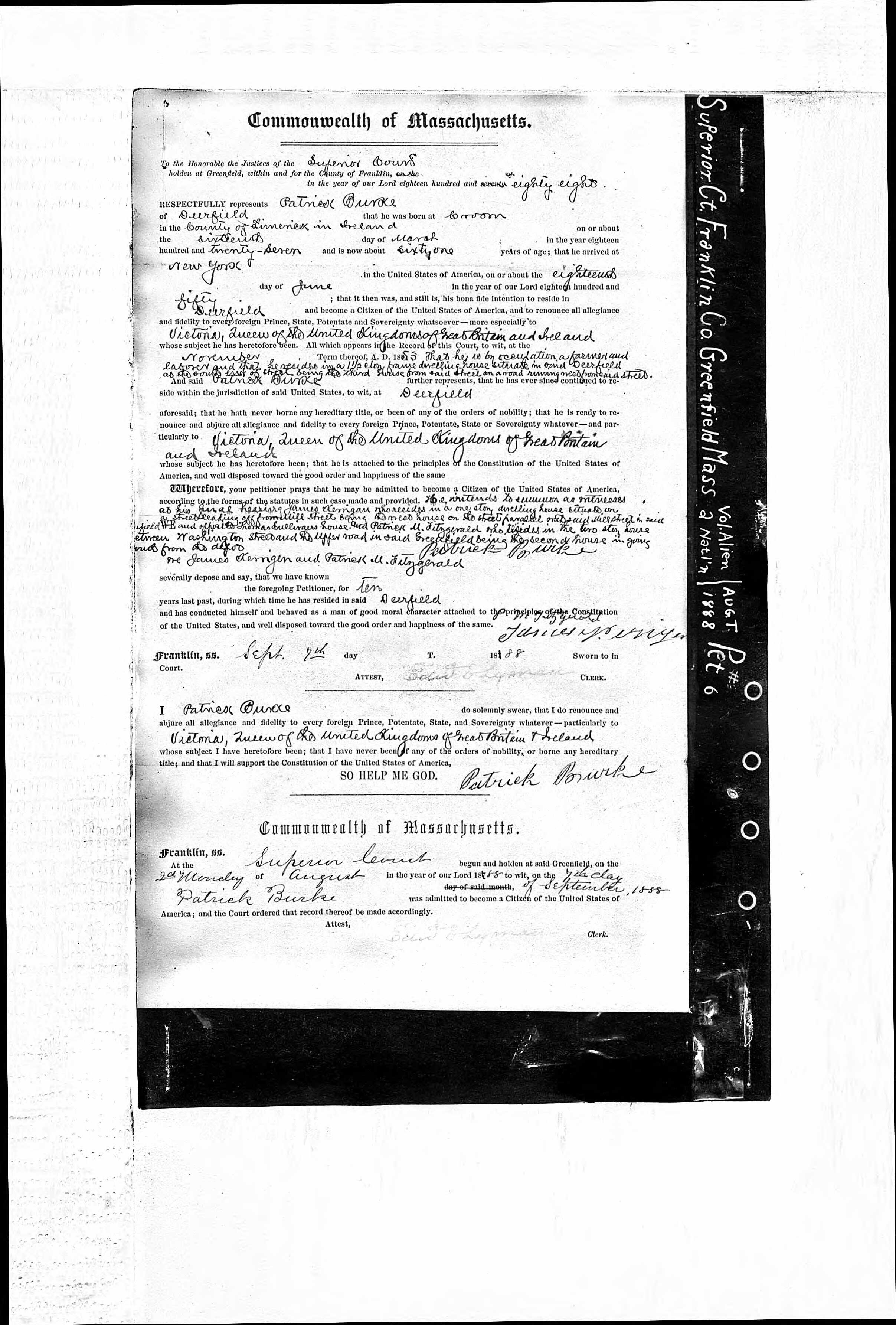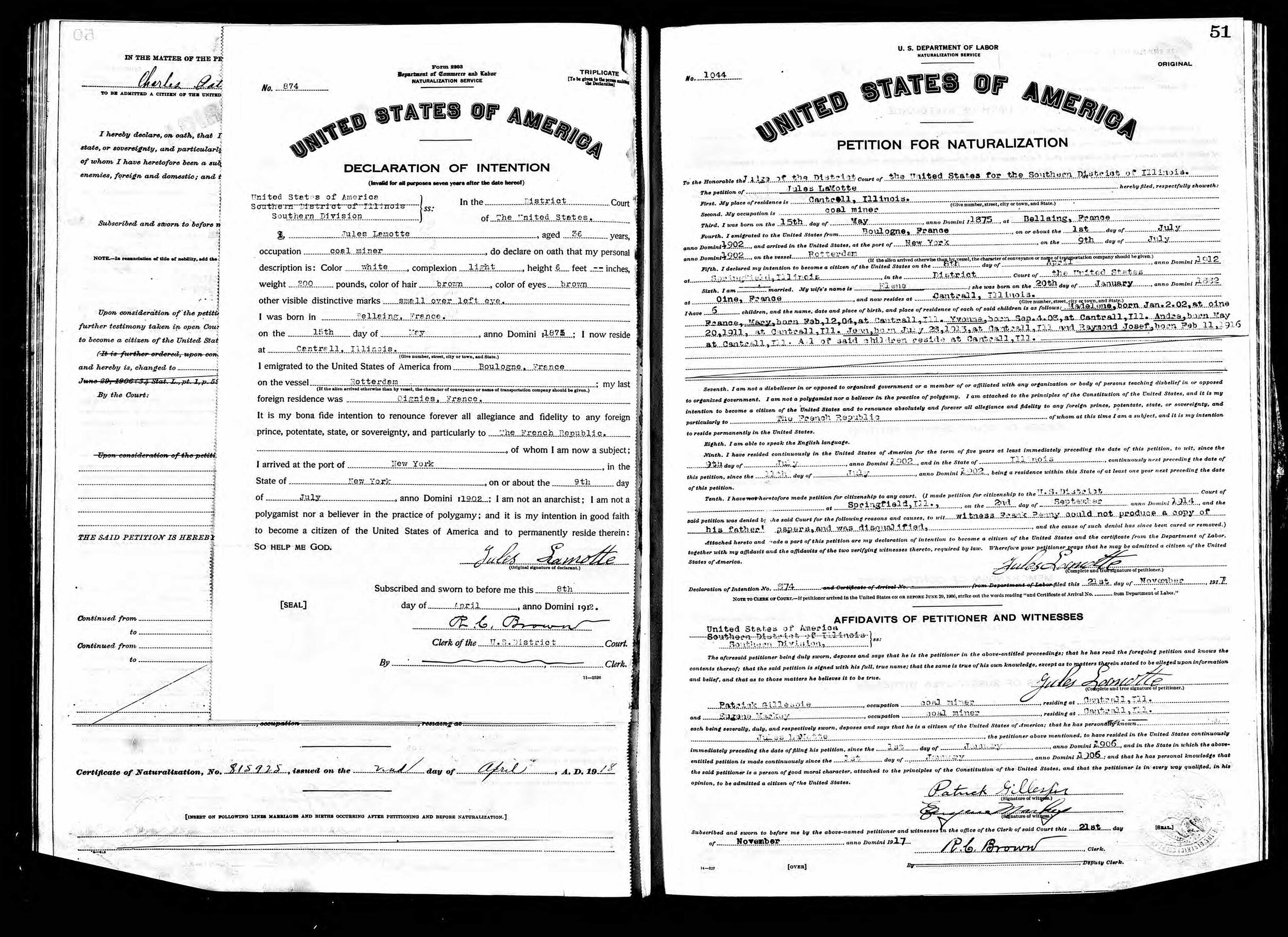What Are Naturalization Records And How Can They Support Your Research?
*This post may have affiliate links, which means I may receive commissions if you choose to purchase through links I provide (at no extra cost to you). All opinions remain my own.
In this post
What information you can find in naturalization records
Other kinds of naturalization papers you might find
While the rules and process have changed over time, immigrants have followed the path to U.S. citizenship for hundreds of years.
Becoming naturalized involved records. And as Judy Russell often says, we genealogists love anything that created records!
In this post, I’ll share how to find naturalization records and how they can help your genealogy research.
If your ancestor became a citizen, you may be able to find some wonderful hints about them from their naturalization papers.
These documents are especially great when you get stuck, like when you can’t find a hometown for someone or have no idea when they arrived in the U.S.
What is the naturalization process?
Naturalization is the process through which an alien becomes a citizen. Before the Revolutionary War, naturalization was simple. People often simply took an oath of allegiance to the United States and a note was made in court records.
The government passed the first naturalization act in 1790, allowing citizenship to any alien who was a “free white person” and also of “good moral character”.
People had to be living in the U.S. for at least two years and in the same state for at least a year before applying for citizenship.
In 1795, this rule changed to requiring living in the U.S. for at least five years and two years in the state of their current residence. It also introduced a new step of filing a Declaration of Intention to become a citizen. In 1824, the rule changed to a two-year wait to file a declaration.
Declarations are also called “first papers”. The need to file a Declaration of Intention ended in 1952, so the time your ancestor applied will affect if this record will exist for them.
After another three years, they filed their Petition for Naturalization, also called “second papers”. Once the petition was granted, they received a Certificate of Naturalization.
To make things more complicated, these steps didn’t have to happen in the same court. If your ancestor moved between the time of filing first and second papers, their records could be in more than one place. I’ve found first and second papers in different states.
From 1855 to 1922, female immigrants who married a U.S. citizen, or whose husband became a citizen, was automatically naturalized.
Related posts
Want To Know About Alien Registration Files And Where To Find Them
4 Genealogy Resources For US Canada Border Crossing Records
What You Need To Know About Mexican Civil Registration Records
What information can you find in naturalization records?
As I mentioned in the last section, there were generally three steps to the citizenship process, and each created records:
Declaration of Intention
Petition for Naturalization
Certificate of Naturalization
Each record type has differing information.
Declaration of Intention
Before 1906, these often had the country the person was born/their allegiance, and the date of the application. In some cases, you can find the port and date of arrival.
After 1906, these could have a specific birthplace, date and place they arrived, and a picture or physical description. They might also have the name of a spouse and kids also being naturalized.
Petition for Naturalization
These records are much more thorough than declarations and can include:
Name (and name changes, including maiden names)
Residence
Occupation
Date and place of birth (with a specific town)
Last residence
Physical description
Their prior citizenship
Date and place of arrival
Marital status
Name of wife, as well as her date and place of birth
Names of children, as well as their birthdates and birthplaces
This naturalization document for my 3x great-grandfather also describes his property.
Certificate of Naturalization
Certificates of Naturalization were given at the end of the process. These often don’t have much information on them but give the person’s name, the court the case was filed in, the date issued, and the certificate number.
The courts didn’t keep copies of these, but they might be found at home with other family documents.
Need help narrowing down when your ancestor arrived so that you can actually find their naturalization records? Try this US census immigration worksheet to pull all the immigration clues into one place!.
Related posts
11 Of The Best Websites For Free Ship Passenger Lists
How To Find Italian Vital Records On FamilySearch
Why You Should Be Using The National Library Of Ireland Parish Register Collection
Other citizenship records you may find
There are a couple more types of naturalization documents you may come across.
Oath of Allegiance
The applicant signed an oath of allegiance after completing the process. These are usually found with the petitions. These don’t say much other than their previous citizenship, their name, the date, and the certificate number. Still, they are interesting to see.
Certificate of Arrival
Starting in 1906, immigrants had to prove they entered the country legally. The Certificates of Arrival were completed by staff at the port the immigrant arrived at, who verified the entry information. These documents generally have the person’s name, the port of entry, the date of arrival, and the name of the ship. They are usually found with the petitions.
Depositions
You may find depositions from people acting as witnesses to help someone’s petition.
How to find naturalization records
Before 1906, any local, county, state, or Federal court could grant citizenship to aliens. Because of this, your ancestor’s application could have happened in one of many court systems. Usually, though, people went to the court that was the closest to them.
And as I mentioned earlier, the process didn’t all have to happen in the same court. The documents may be in more than one state.
After 1906, the Federal courts became the overseer of naturalization cases. These records will be with the nearest National Archives branch to the Federal court.
Ancestry is a great source for naturalization records. They have a ton of collections, including those for specific states and counties.
FamilySearch has citizenship record collections and indexes for a few states. Some aren’t indexed but are browsable.
Fold3 also has a few regional naturalization collections.
Final thoughts
If any of your ancestors became citizens, you can find great tidbits to use for your genealogy research. These records are especially helpful if you’ve had trouble finding an exact place of birth for them or when they arrived.
Try narrowing down the window of when they arrived with a US census immigration worksheet so that you can focus your research efforts.
Are you short on time but dreaming of discovering your ancestors? Let me help you build your family tree!
Contact me to set up a free, 20-minute no-obligation call where we can talk about what your genealogy needs are and how I may be able to help you.
Related posts
7 Free Websites To Inspire Your Scottish Genealogy Research
Why Local History Books Are Important For Your Genealogy
What Is A Nom Dit And Why Did My French-Canadian Ancestry Have One
Books cited
Rose, Christine. Courthouse Research for Family Historians. CR Publications, 2004.




